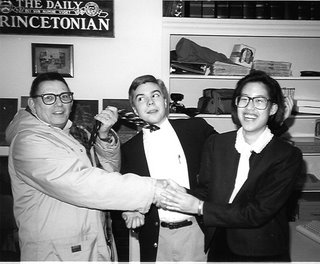Larry, however, was totally real
College students live an unreal existence. There are a few fixed obligations, such as lecture times or deadlines for papers; otherwise, you can pretty much decide what you want to do, how much of it you are going to do, and when you are going to do it.
For me, entering Princeton in 1970 in the second year of coeducation, the unreality was multiplied many times by being one of the few “girls” (we weren’t “women” then) on campus, by going from my highly urbanized New York existence to the beautiful, foliage-filled campus, and by the group of distinct personalities, backgrounds and accents from all over the world that I encountered for the first time. Especially during my first year, I often had no idea where I had landed.
Larry, however, was totally real.
In sharp contrast to the rest of college existence, which was tended to the free-form, Larry expected results and product, delivered on time and competently done on a tight schedule. It was from Larry and the ‘Prince’ that I developed a life-long fidelity to meeting deadlines, to turning out good written work, to getting the facts straight and reporting them accurately. And Larry was the first person who made it clear that I should not be overly impressed with myself, just because I had had the good fortune to get myself admitted to
Nights spent at the press with Larry were a reminder that there was a world out there beyond college. We talked about real-life concerns, such as his firefighting and his pride in raising his daughter, and we frequently debated the relative merits of his Catholicism versus my Judaism. Over the two-and-a-half years that I worked on the ‘Prince,' I watched his initial professed skepticism about the wisdom of coeducation melt into pride as we “girls” on the paper worked our way up the ladder to the editorial board, where we participated in running the show.
Larry kept me grounded. I’ll always remember him for that.
— Diana Savit ‘73, senior news editor emerita




